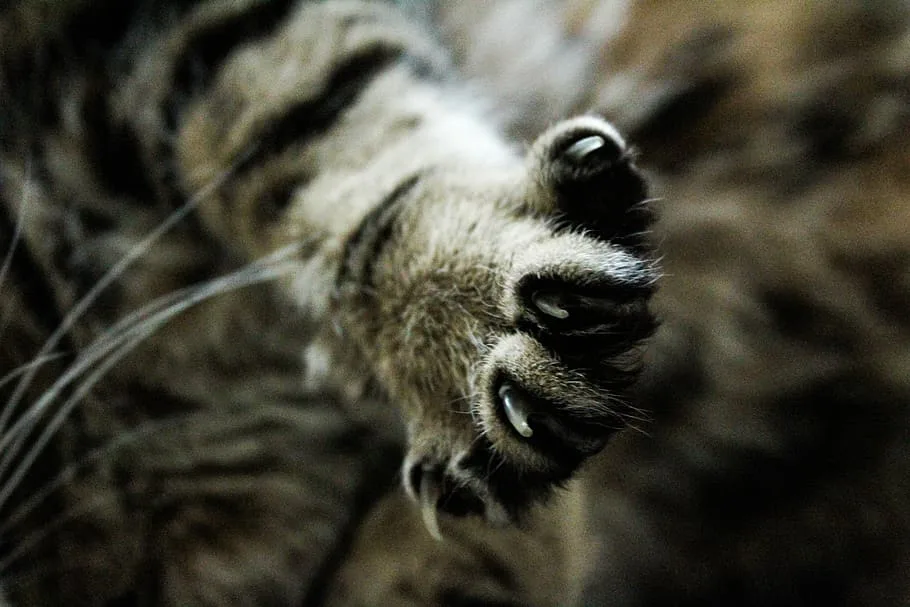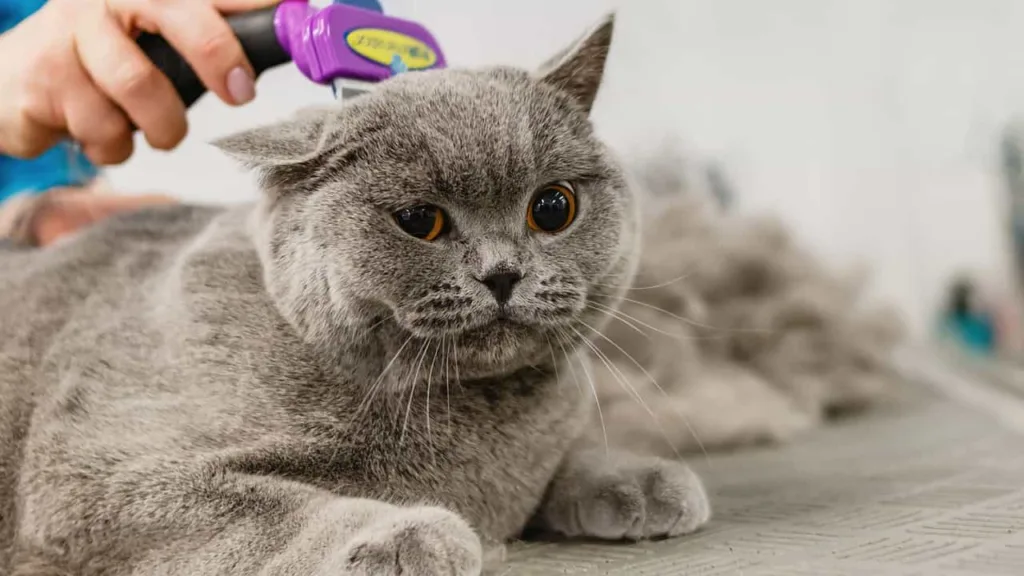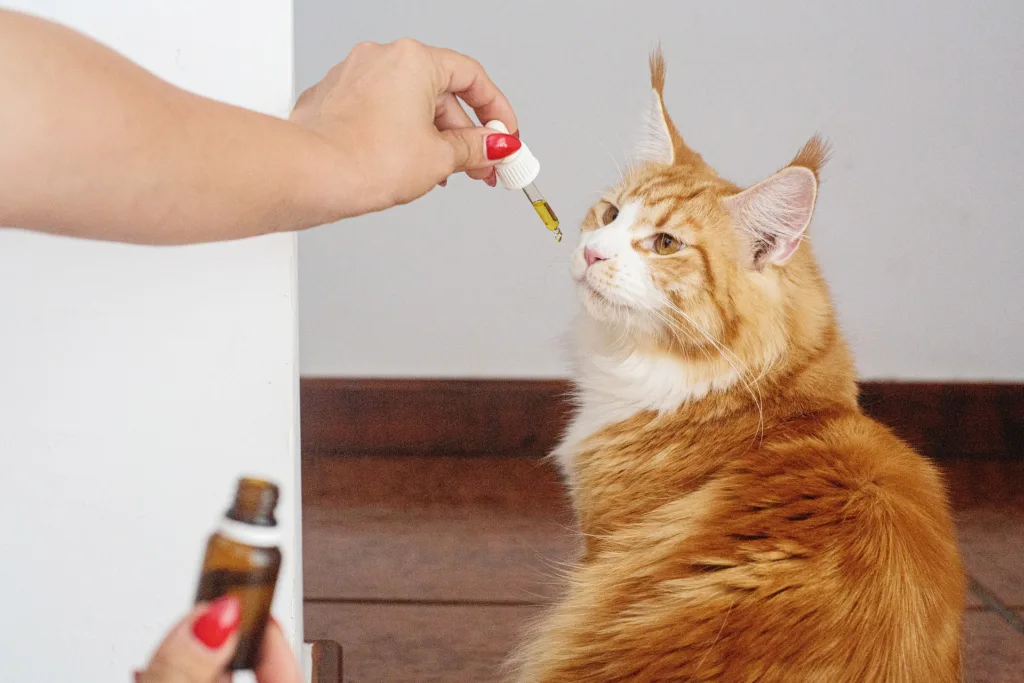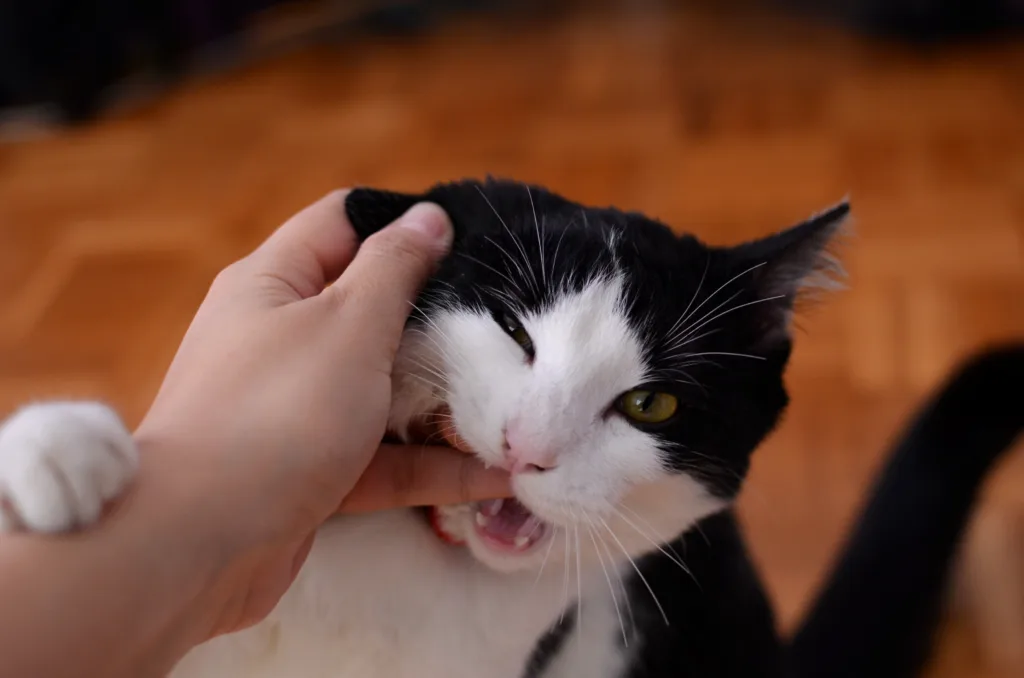You take care of your cat very well, but despite your caring and grooming, your cat may have problems with his body. One of the problems is the toenail and claw problem. That means your cat can have a deformed toenail.
The deformation of toenails can be because of growing age, trauma, and infection. If you notice any abnormality, thickening, or infections in your cat’s nails and claws, take it to the vet and treat it as needed.


There are different types of nail disorders. One is Paronychia. It is an infection in the nail bed that inflames the tissues around the nail. The second type is Onychomycosis. It is a fungal infection of the nails.
Nail problems are serious issues that cats can suffer a lot from it. Cat also cries out due to pain in the nails and claws.
So, the toenail problem is some malfunction and disorder due to any infection, injury, or growing age of your furry friend.
Table of Contents
The symptoms and types of toenails and claw problems
- Licking the paws.
- Difficulty in gaits and, in other words, lameness.
- Pain in the feet.
- Swelling in the tissues that surround the nails.
- Deformity of the nail plate. That means any part of the nail overlays on the nail plate.
- Discolor of nails.
- No scratching activities.
- Crakes in the sides of the nails.
The causes of toenail and claw problems
- Bacteria
- Fungus or Bacteria
- Tumours
- Injury and trauma
- Immune-mediated diseases
- Loose nails
- Growth hormone level
- Congenital birth
- Bleeding due to the cut-off veins. That means when you cut your cat’s nails, you must be careful about the veins that surround your nails.
- Abnormal growth of body cells.
Diagnosis of cat’s toenail and claw problems
Well, claw disorder and toenail problems can seem to be very normal, but they can be caused by serious infections and even major diseases like cancer. So, it should be diagnosed. So, you must take your cat to the veterinarian to diagnose and find the right solution to those problems.
The vet must want to know the medical history of your cat to determine the cause that the issues are congenial or by birth. If the problems arrived for the recent nail trimming, that is not done properly because the veins have been cut off.
After knowing the full medical history, the vet will check the nails and claws to know the condition and how many claws are affected. If more than one nail is affected, it is a serious condition for sure.
If your cat needs further tests, the vet will collect samples from the nail area of your cat and send them for diagnosis. Teh result will tell what is the reason behind the problem. Is it for bacterial or fungal infection, trauma, or any more serious issue like cancer?
How to recognize and diagnose the claw and toenail problems at home
Diagnosing the problems of toenails and claws is very much important. So, if the process is done step by step, it will be done perfectly. Of course, the vet knows how to do it very well, but you also should know the right process. The steps are as follows-
First step: recognizing the symptoms of deformed toenails and claw problems:
- Check the thicker nails: animals’ nails should be thin and sharp. So, if your cat’s nails are thicker, bold, and gluttoned, then it is a symptom of the problem. Older cats are more prone to this problem with increased thrust.
- Check any injury or trauma in the nail bed: cat’s nail bed can be injured somehow because of trauma and injury. Maybe the injury occurs from fighting, spaying, or scratching. So the claw may grow deformed.
You should look for missing, broken nails and redness or swelling around the nailbed. Some cats are very much sensitive about their toenail and paws. They don’t allow even only touch their toenail and paw pads and feel pain.
- Check for scaly nails:
Ringworm-related infection is responsible for scaly nails. Your cat may develop an infected, rough, scally pitted nail base.
- Embedded nails: if your cat’s nails are not scratched and trimmed properly, they grow and become long. For this reason, it becomes curly and embedded. It grows into the paw pad. The situation is painful and makes the nails deformed. Older and inactive cats are prone to this problem.
- Behavioural changes:
When the cat’s nails and paws bother them, they don’t act like before. That means they don’t play and walk like before because the nails and paws make obstacles in their gaits. They also lick their paws more than before.
- Abnormal and deformed claws and toenails: You must notice the claws are abnormal. The nails should be white coloured, and the underneath should be pinkish. So, if you notice that the colours are different from their usual colour, it is a problem.
Second step: Diagnose the deformed nails:
- Take your cat to the veterinarian: If you take your cat to the vet, he can recognize the reason for your cat’s toenail and claw problem. After knowing the case history, checking the nails and claws, and testing the samples of your cat’s nailbed skin, he can tell you the reason and treatment of your cat’s nails and claws.
Never hesitate to go to the vet because if you delay treating your cat properly, it may become a serious problem.
- Blood and another sample test may be required:
Any doctor can’t be sure about the disease without a test because tests can tress invisible and underlying problems.
If the vet considers the problem for fungal and bacterial reasons, it is an infection. Blood test and is always a good way to tress parasites and infections.
- Get a biopsy:
A biopsy is very much needed in autoimmune diseases. Toenail and claw problem is one kind of autoimmune disease. The vet will take a skin scrape and analyze it to determine the cause of deformed nails.
Final step: It’s time for treatment:
- The vet should cut the nails: If any nail is ingrown, you can’t cut or remove it yourself because it is a vet’s job. So, your vet should cut or remove it as the procedure is very painful, so the vet will go through anesthesia so that your cat doesn’t feel pain. If the nails need to be cut partially, the vet will do the same. Sometimes, cats are needed to be sedated to remove the nails.
- Infections should be treated with antibiotics: if the reason is an infection or ringworm of your cat’s toenail and claw problem, the vet will treat it with antibiotics and other medications.
If the reason is a fungus, the vet will prescribe anti-fungal medications like oral or tablets, soak, and ointments. The treatment is supposed to continue for 3 months until a new and healthy nail takes place.
- Monitor the situation and recovery of your cat’s nails and claws: Most nail problems recover quickly after proper medications and surgery. The problem is also not so critical and treatable. Keep monitoring that the nails are healing and have no additional problems.
If the nail and claw problem reappears, you must go to the vet again. The second appearance could be a sign of cancer. So, another round of treatment is natural.
Besides, cat owners must know the right procedure for nail cutting so that the veins are safe from cutting. There are so many delicate veins around the nails.
Claw and nail treatment is expensive to afford. So, you should take pet insurance to afford the cost of treatment when you need it.
The home remedy and treatments of cat’s toenails and claw problems:
You can treat your cat’s toenails and claw problems at home too. If any surgery is required, please don’t try it at home. In this situation, you must go to the vet. But if the problem is minor, you can treat your cat at home.
You can treat your cat’s problem properly when you know the reason properly. So, a physical check and laboratory investigation are required before you treat your cat.
In most cases, things are not so critical.
So you can handle it yourself. But if the matter is serious, vets undergo surgery, antibiotics, and other medications.
Cancer is the last stage of serious disease. So, if your cat’s toenails and claws have that kind of seriousness, the vet may remove the nails.
Soaking the affected nails with warm water:
The first home remedy is soaking the affected nails and claws with 50% warm water and 50% liquid antibacterial soap. Leave it for about 15 minutes. The remedy should be done ¾ times daily to get the best results. Remember that the remedy is suitable only for mild cat nail infections. Your treatment at home and going to the vet is not required.
Washing the feet, nails, and paws:
Another useful home remedy is you wash your cat’s feet, nails, and claws. Wash with water and apple cider vinegar. Most cat owners acknowledge the effectiveness of apple cider vinegar. Vinegar is a natural antiseptic that is effective for bacteria and fungal infections.
Home remedy for a cat’s bacterial nail bed infection:
This treatment should be done with a prescription from a vet. The vet will recommend some antibiotics and medications, and you should follow them at home.
Home remedy for cat’s fungal nail bed infection:
It’s a long-term process. Fungal nailbed infections can be treated with anti-fungal therapy. Proper nail hygiene and frequent nail trimming are a must for fungal infections. You can’t do it alone. The veterinarian’s advice and supervision are mandatory for the treatment.
The antibiotics that are used to treat cats’ nail bed infections:
Antibiotics are a non-surgical remedy that is applied in nail bed infection treatment. You can use paronychia to soak the affected nails and claws.
The human immunocompromised system is another effective antibiotic, such as the first-generation cephalosporin or antistaphylococcal penicillin, clindamycin, or amoxicillin-clavulanate.
Antibiotics for fungal claw disease:
Most fungal claw diseases are treated using Malezzia, terbinafine, and itraconazole.
No doubt all the antibiotics I have mentioned above are very much effective.
Now, I will mention some antibiotics that are very much common. Veterinarians usually prescribe those antibiotics. Such as-
- Amoxylin
- Metronidazole
- Chloramphenicol
- Doxycycline
- Clindamycin
- Cephalexin
- Sulphadimethoxin
- Gentamicin
Cat claws-it’s anatomy, function, and disorder
The claw is a scythe-shaped accessory connected to the toe’s end bone. Like other four-legged animals, cats have four toes on each hind foot and five on each forefoot. There is a fifth toe, and it is called a dew claw. It has no connection with the ground.
Some cats are known as polydactyl cats. They have an extra toe and claw.
The function and anatomy of cat claws:
As I have mentioned before, the claw is located on the distal part of the toe, so it is attached to the end bone of the toe. The keratinized dead cells are the main element of claws. With the growing claws, the outer layer sharpens a new claw underneath.
The claw produces structures like matrix, proximal nail fold, ungual fold, eponychium, paronychia, and hyponychium.
The claws stay on a distal phalanx, and the claws stay retracted and sheathed with 2 dorsal elastic ligaments. The skin the claws retracted with reduces the wear and tear on the claw. Cat has a digital flexor muscle that protects the claws.
A quick is also located at the center of the cat’s claw. The claw is rich in blood vessels that help the claw and nerves to grow.
The functions of the cat claw:
The claw has a versatile role and functions. Those are-
- Body balancing
- Scratching
- Climbing
- Digging
- Self-defence
- Traction
- Gripping anything
In total, cats will become an object without their claws.
The diseases and disorders of the claws:
- Trauma or tearing is damage and occurs due to the snagging of the claws.
- Perionyxis: it is one kind of inflammation that affects the skin, eyes, ears, and toes of the affected cats.
- Onychodystrophy: abnormal growth and deformity of claws. Hyperthyroidism, congenital malformation, and acromegaly are responsible for this.
- Paronychia: bacterial or fungal inflammation and skin infection surrounding the claws.
- Onychomedesis: when the nails are separated from one another due to trauma, cancer, immune-mediated disease, infection, inadequate blood flow, etc.
- Onychomycosis: it is a fungal infection of the nail bed.
- Onychorrhexis: brittle claws prone to break because of trauma and infection.
- Onychocyptosis: ingrown claws. Those are most common in older cats because of their lack of mobility.
- Onychauxis: a thickening of claws due to reduced exercise and gait.
The symptoms of claw disorder:
The clinical disorder symptoms may vary depending on the potential reasons. But the most common symptoms are pain, reluctance to walk or jump, lameness, licking the affected claw, bleeding, swelling, and unpleasant odours.




